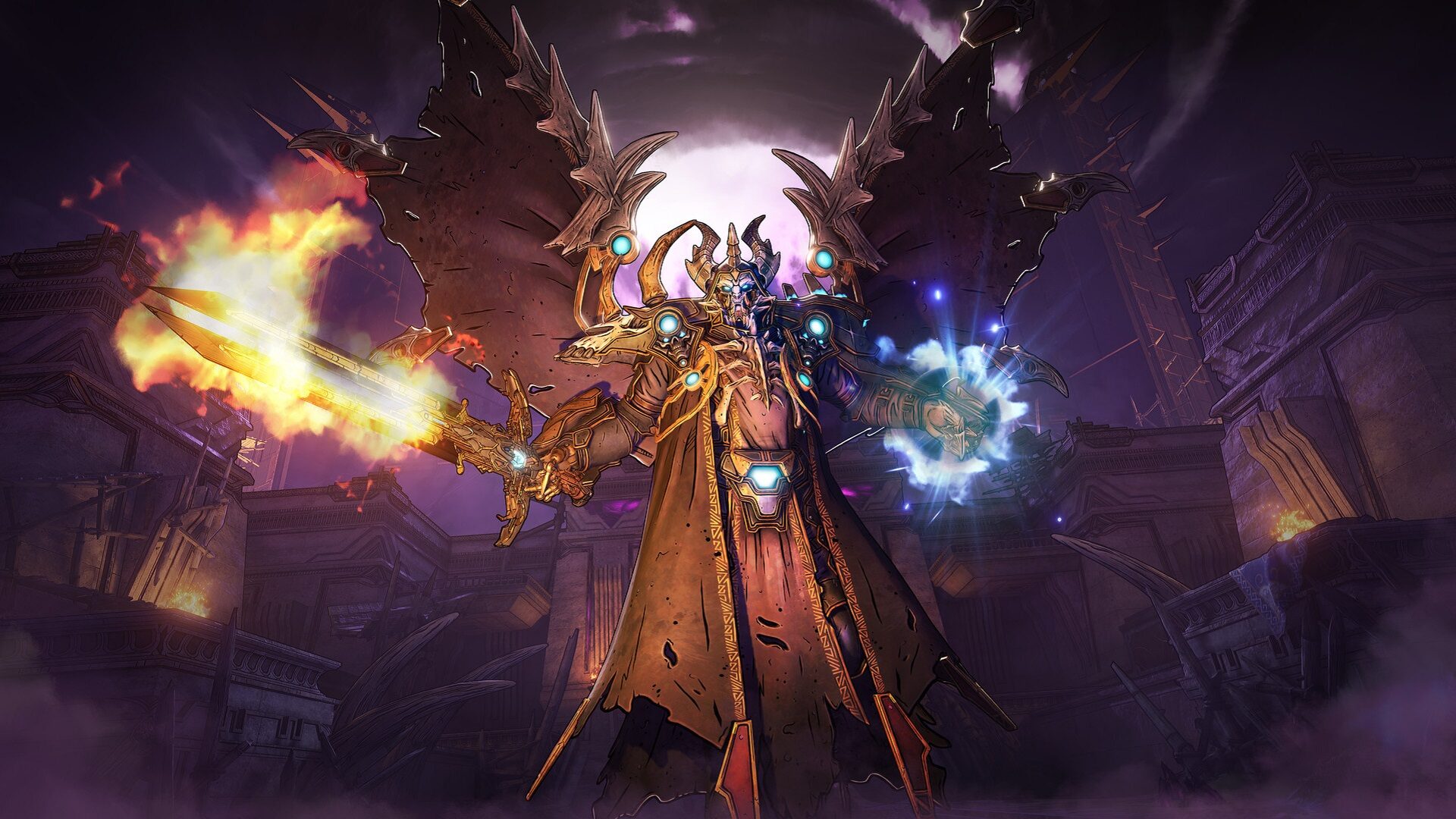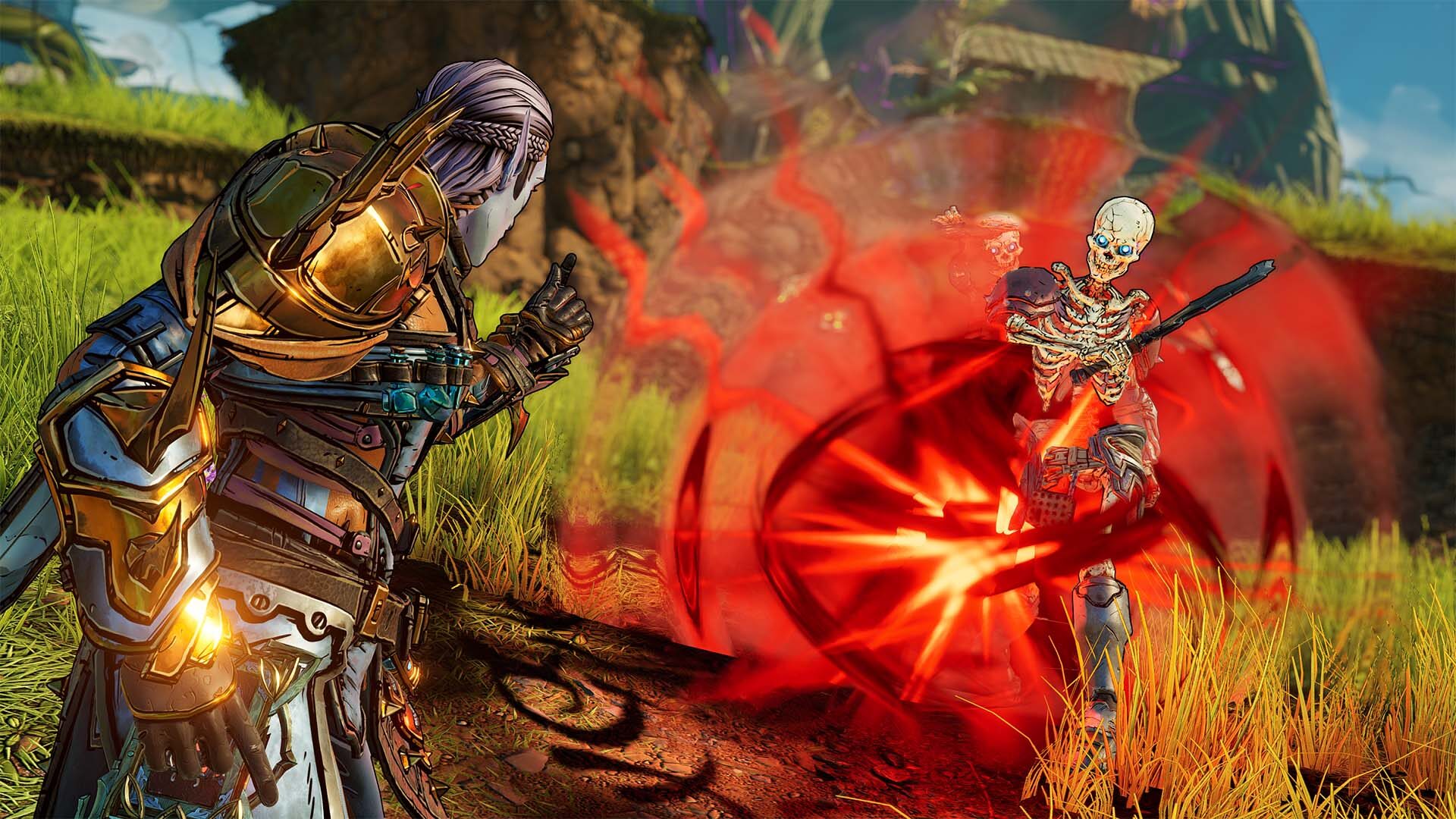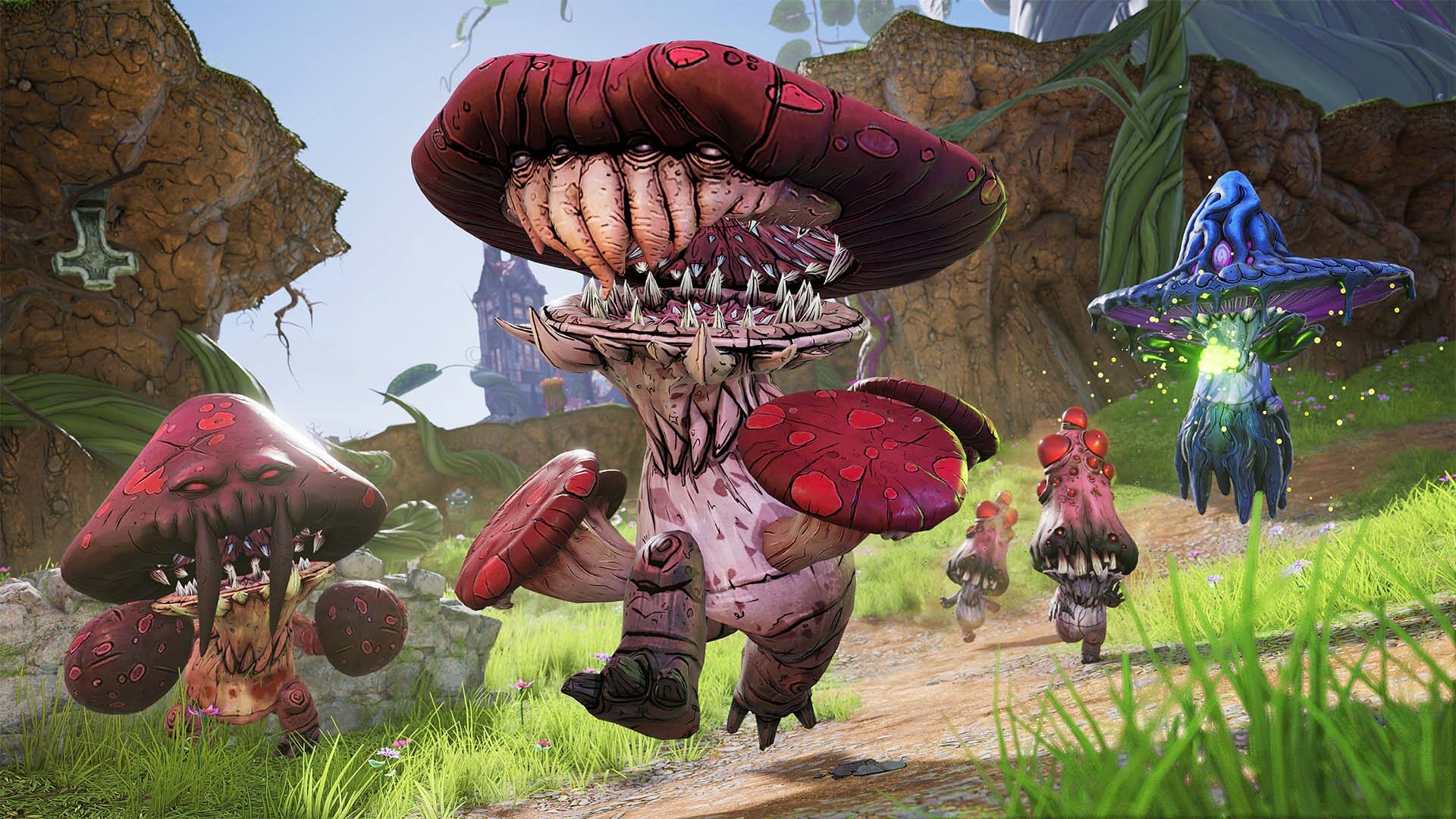For too long, Gearbox has limited the Borderlands formula of wacky guns, cheeky humor, stats-driven character building, and not-actually-cel-shaded art style to its corpo-apocalyptic, Mad Max–inspired sci-fi world of Pandora and beyond. But a little less than a decade ago, the Dragon Keep expansion for Borderlands 2 hinted at what that formula would look like in a Dungeons & Dragons–style fantasy setting, and the results were promising.
With Tiny Tina’s Wonderlands, Gearbox has basically taken the idea behind that expansion, combined it with the gameplay evolutions of Borderlands 3, and transformed Dragon Keep into a full-blown spin-off—and the results are predictably mixed.
I say predictably because Borderlands has never been a series that’s totally hit it out of the park. It came close with Borderlands 2, but as a more casual fan who plays for the main campaigns and some of the side quests, it’s always been a series that I enjoyed but could never fully embrace. Some of my hesitation has to do with the eye roll–inducing humor, but a lot of it has to do with the way that its obsession with loot tends to overshadow more important stuff like character development or standard gameplay. In some ways, the series has vastly improved over the years, but it’s always fallen just short of the mark for me.
Likewise, the general problems that I have with the Borderlands series as a whole are still present in Tiny Tina’s Wonderlands. While the entire premise of the series is based on the idea of loot and there being a shit-ton of it, most of that loot ends up being pretty much worthless and feeling more like a burden that takes up space in your inventory rather than useful pieces of your arsenal. Wonderlands didn’t have to go that route, seeing as its premise is that you’re playing a TTRPG called Bunkers & Badasses with Tiny Tina serving as the Bunker Master. If there was ever a time to reassess the series’ legacy issues, it would have been in a spin-off like this, but Wonderlands doesn’t take advantage of that opportunity.

Maybe asking Gearbox to think beyond the piles of colorful loot for a meaningful reward system is too much for a Borderlands spin-off, but we could have at least gotten a better way of managing all the crap you earn that you don’t want. If there was a method to simply cash-in the weapons you don’t want from the inventory screen, that would have gone a long way. Instead, you still have to stop by a vending machine every time you want to get rid of loot without wasting it. Even more annoying is the fact that a cosmetic item you pick up will just take up space in your inventory if you don’t remember to “claim” it, which requires you finding it in your backpack and pressing the appropriate confirmation button. Why not just let players automatically claim cosmetics when they pick them up and only put them in the inventory if the items are duplicates that they can sell?
On the other hand, this series is still the master of giving players loot that actually feels meaningfully different in terms of gameplay. Sure, you might have to sift through tons of garbage before you find the weapons that click, but when you finally do, the rewards feel worth it. By the time I rolled credits on the main campaign, I was using an assault rifle that shot bursts of electricity, a submachine gun that fired beams of poison goop, a shotgun that unleashed beams of dark magic instead of buckshot, and a sniper rifle that used buckshot instead of single rounds. As usual with a Borderlands game, I felt like the loot I chose to use was really unique and, more importantly, mine. Combine that with the other gameplay advancements that Borderlands 3 introduced like sliding and mantling, and you have the best FPS action in the series so far, if not appreciably different from its predecessor.
Other aspects of the Borderlands formula have been slightly transposed to fit a fantasy theme. Instead of grenades, you can equip spells that you shoot out after a cooldown, which you can reduce by leveling up the requisite attribute. There’s also a slightly bigger emphasis on melee combat, with weapons like axes, swords, and maces that all have different abilities and stats. Wonderlands also expands the series’ traditional class system from four Vault Hunters to six different classes: Brr-Zerker, Clawbringer, Graveborn, Spellshot, Spore Warden, and Stabbomancer. Even more interesting is that, fairly early in the game, you have the chance to take on a second class as your subclass, letting you combine different skills and passive perks from both classes’ skill trees. As someone who chose the Graveborn and Spore Warden classes (a “Morticulturist”), I also had access to two different AI companions that followed me around who poisoned and cursed enemies for me, which was quite useful as a solo player.

What’s disappointing about Wonderlands’ different classes—and its RPG system in general—is how little it felt like an actual tabletop experience. The spells I picked up as loot weren’t exclusive to my Morticulturist build, so I would often get spells that did elemental damage that weren’t compatible with my focus on dark magic and poison, both in terms of my stats and the kind of character I was trying to play. I definitely felt like I was able to create a cool Borderlands build, but I didn’t really feel like I was totally capable of roleplaying. Likewise, while the character creator was much more open and customizable than it has been in past games, I never felt like I was able to make the kinds of choices you’d expect to be able to make when playing a Dungeons & Dragons–inspired project. Was I expecting Larian Studios-esque depth when it came to making choices as a character? Not at all—but I was expecting to at least have some influence on the plot. That, sadly, was not the case.
Really, that’s the biggest disappointment with Wonderlands: It doesn’t at all feel like the genre of RPG that it’s using for context. The idea of playing a tabletop game narrated by Tiny Tina (played excellently by Ashly Burch), where the rules of the world are completely subject to her whims and fancies, is really fun, especially with humor that feels less referential and much more character-driven than it did in Borderlands 3. But there aren’t even dialogue options or anything that gives you the feeling like you’re determining which way the story goes. There are sendups of certain fantasy tropes, with a unicorn named Butt Stallion (a weird holdover from the Dragon Keep expansion) acting as the queen and killer skeletons all very much aware of their station in (un-)life. However, even the fantasy aesthetics of the world get stretched quite thin, especially in a mid-game that seems awkwardly obsessed with swashbuckling pirates—not the kind of motif you usually see in a fantasy world. The only change that makes Wonderlands feel more like a TTRPG is the overhead Overworld map that you use to travel to each new location, but even that just feels more like a basic video game map than a tabletop game, while also making it more annoying and time-consuming to get into the action. Thankfully, the numerous side quests—at least the ones I played—are all well-written and fun, even if they are exactly the kinds of quests you’d expect from a Borderlands title.
In some ways, the lack of player choice does fit the overall arc of the story. Framed as a Tiny Tina–hosted “Bunkers & Badassess” session, the player—known only as the “Fatemaker”—must take down the Dragon Lord (voiced by Will Arnett) alongside party members Valentine (Andy Samberg) and Frette (Wanda Sykes). However, as the story progresses, the world of Tiny Tina’s fantasy and her reality start to converge, and questions of what it means to be in control as a player in a game start to pop up. It never gets too outlandish, but it also doesn’t necessarily nail the subtle emotions or totally navigate the sticky layers of meta-narrative that it sets up. In the end, the story seems almost hindered by the fact that it’s a spin-off of a spin-off, though Burch and Arnett do turn in fantastic performances, with Samberg and Sykes only occasionally showing more than middling enthusiasm for the material.
Tiny Tina’s Wonderlands is fun in all the ways that Borderlands is fun, and Gearbox’s talented environmental artists also got to stretch their wings a little bit and experiment with settings you might not find in a mainline entry. Ultimately, players who are perfectly content with more Borderlands will find a lot to like about Wonderlands, but there definitely seems to be a missed opportunity to inject more actual role-playing into this action role-playing series.

Images: 2K Games
|
★★★☆☆
The best and worst thing about Tiny Tina’s Wonderlands is that it feels like another Borderlands game. The shooter gameplay is as tight and responsive as ever, the weapons are fun to use, and the writing is a marked improvement over Borderlands 3. The characters are once again at the center of the game’s comedy, and the performances are great (when the actors are actually committing to their roles). But, because this is more Borderlands, a lot of the same annoyances with the series persist, especially when it comes to inventory management and the sheer amount of meaningless loot. Really, Wonderlands’ worst offense is that it can’t get over the series’ legacy of looting and shooting, and misses the opportunity to take real inspiration from the tabletop worlds that it parodies. |
Developer Gearbox Software Publisher 2K Games ESRB T - Teen Release Date 03.25.22 |
| Tiny Tina's Wonderlands is available on Xbox Series X/S, PlayStation 5, Xbox One, PlayStation 4, and PC. Primary version played was for PC. Product was provided by 2K Games for the benefit of this coverage. EGM reviews on a scale of one to five stars. | |

Michael Goroff has written and edited for EGM since 2017. You can follow him on Twitter @gogogoroff.